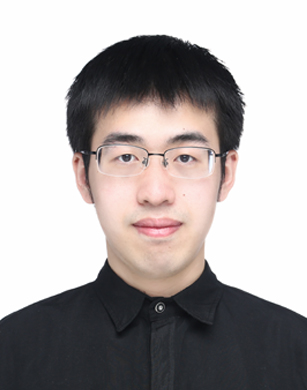Jie XIONG

PhD Student
Research group: Condensed matter
Advisor: Silke Biermann
Thesis: "Correlated Electron Materials: New combinations of perturbative and non-perturbative many-body methods for a realistic theoretical description"
Research interests
Condensed matter theory, Correlated materials, Non-local correlations
Materials with strong electronic Coulomb interactions leading to collective many-body phenomena count among the most interesting systems of modern solid-state physics. Examples include transition metal compounds such as cuprates, iridiates, or the celebrated vanadium oxides exhibiting metal-insulator transitions. Studying such phenomena is a very active field of research, combining both experimental and theoretical work. Many of the phenomena involved lie in the regime of intermediate coupling strength where kinetic energy effects and Coulomb correlations are comparable in magnitude and compete. In these conditions, intrinsic many-body phenomena of non-perturbative nature develop, such as the Kondo effect, screening of magnetic moments by conduction electrons in a gigantic many-body entangled state. Treating these interactions with a perturbative approach is therefore not sufficient. A tool of choice are dynamical mean field techniques (DMFT) [1] that have evolved over the last decades and have by now become mature techniques for treating many-body phenomena non-perturbatively in all interaction regimes, including the Mott metal-insulator transition. And the heart of DMFT is the mapping of the interacting solid onto an effective interacting atom system, coupled to a fluctuating bath that translates local quantum fluctuations. A drawback of DMFT stems however from an approximation which is quite intrinsic to this construction: the resulting many-body self-energy is supposed to be purely local. This restriction leads to clear limitations, for example in low- dimensional systems, where non-local fluctuations become large or very close to the phase transition region in higher dimensional materials. Recent work has provided some advances to overcome this problem. The idea is to combine DMFT with a perturbative treatment of non-local corrections. The initial proposal of such a “GW+DMFT” scheme [2-5], where “GW” stands for a perturbative treatment to first order in the screened Coulomb interaction, dates back to 2003, and since then several benchmark applications have emerged demonstrating the power of the approach. Nevertheless, there are still open questions, relating for example to the rigorous formulation of the self-consistency condition used [6] and implementations in the multi-orbital case. The goal of this PhD project is to further advance this field. Several axes are available: theoretical developments and extensions, applications to real materials systems, questions related to computational aspects of the implementation of different schemes. The starting point will be the new formulation of the DMFT self-consistency condition proposed in [6]. We will explore ways of establishing a rigorous functional formalism of this self-consistent theory, which will be used to investigate non-local correlation effects in models of correlated fermions and in real materials systems (in particular vanadates).
References:
[1] Antoine Georges, Gabriel Kotliar, Werner Krauth, and Marcelo J. Rozenberg. Dynamical meanfield theory of stronglycorrelated fermion systems and the limit of infinite dimensions. Rev. Mod. Phys., 68, 13–125, 1996.
[2] Silke Biermann. Dynamical screening effects in correlated electron materials—a progress report on combined many-body perturbation and dynamical mean field theory: ‘GW + DMFT’. Journal of Physics: Condensed Matter, 26(17), 173202, 2014.
[3] Michele Casula, Alexey Rubtsov, and Silke Biermann. Dynamical screening effects in correlated materials: Plasmon satellites and spectral weight transfers from a green’s function ansatz to extended dynamical mean field theory. Phys. Rev. B, 85, 035115, 2012.
[4] Jan M. Tomczak, Michele Casula, Takashi Miyake, Ferdi Aryasetiawan, and Silke Biermann. Combined GW and dynamical mean-field theory: Dynamical screening effects in transition metal oxides. Europhysics Letters, 100(6), 67001, 2012.
[5] Jan M Tomczak, Michele Casula, Takashi Miyake, and Silke Biermann. Asymmetric band widening by screened exchangecompeting with local correlations in srvo3: new surprises on an old compound from combined GW and dynamical mean field theory GW + DMFT. PRB, 2014.
[6] S. Backes, J. H. Sim, S. Biermann, Physical Review B, 105, 245115, 2022.
| Address | CPHT, Ecole Polytechnique, 91128 Palaiseau cedex, France |
| Phone number |
|
| firstname.lastname@polytechnique.edu | |
| Office | Aile zéro, Office 1006 |
